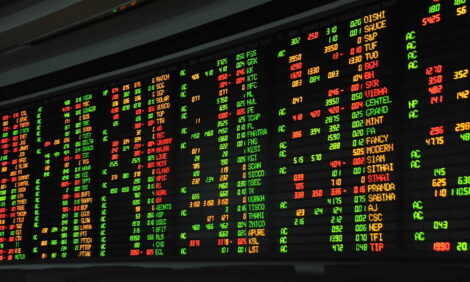



Today’s forecast: Scattered PRRS outbreaks with isolated sprinkles of PED
Forecasting swine-disease outbreaks might become a lot like predicting the weather as scientists combine monitoring disease data with computer models.“It’s kind of like having a weather forecast: ‘There’s an 80 percent chance of PRRS next week’ or ‘a 20 percent chance of PRRS,’” Kim VanderWaal, PhD, assistant professor, University of Minnesota, told Pig Health Today.
The prediction would alert sow farms to take heightened prevention measures and avoid or reduce the impact of a disease outbreak.
That may sound far-fetched but it’s closer than the industry thinks, she added.
Focus on two diseases
VanderWaal said they’re working on a model to predict two swine diseases — porcine reproductive and respiratory syndrome (PRRS) and porcine epidemic diarrhoea (PED) — using data generated by the Morrison Swine Health Monitoring Project (MSHMP).
“We hope to be able to take data from MSHMP, combine it with movement data from [hog] companies and have the data system worked out that this data flows in smoothly and we run it through our model,” she explained.
The output from the model will be a list of sow farms with a high risk of a disease outbreak in the next week. A participating farm would receive a forecast only on that farm. The forecasts will be private and not released to anyone else.
The prediction model is in a retrospective testing stage, where they try to predict what has already happened. That helps VanderWaal and her team see if they are using the right factors in the prediction model that affect how PRRS and PED are transmitted.
"Moving disease"
The biggest factor determining PRRS and PED transmission is the movement of pigs. Most pork-production companies move thousands of hogs every week, which adds up to an estimated 20 million pigs a year, VanderWaal estimated.
“If you’re moving pigs and if you’re moving sick pigs, then we’re moving disease,” VanderWaal explained. “It accelerates the ability of a pathogen to rapidly move around the country.”
The PED outbreak in 2013 showed how quickly a disease can go from first detection to widespread transmission everywhere, VanderWaal added. Animal movement played a big role in PED’s spread.
Other factors affecting PRRS and PED transmission include the density of farms in an area, the season and landscape/vegetation.
Tracking pig movement
The biggest hurdle to producing an accurate disease-prediction model is obtaining current hog-movement information from companies. Some movement data are a part of MSHMP, but more and immediate movement data are needed to make timely predictions.
“We basically ask companies if they’re willing to share with us [pig] movement data,” VanderWaal said. “Some of the companies say yes and some of them say it’s on paper, so no. But most companies we work with are very open.”
While discussions continue with hog companies about importing hog-movement data, VanderWaal and her team will continue to build the model and make sure it works. Then they will be ready to start implementing and operating it for disease forecasts.






